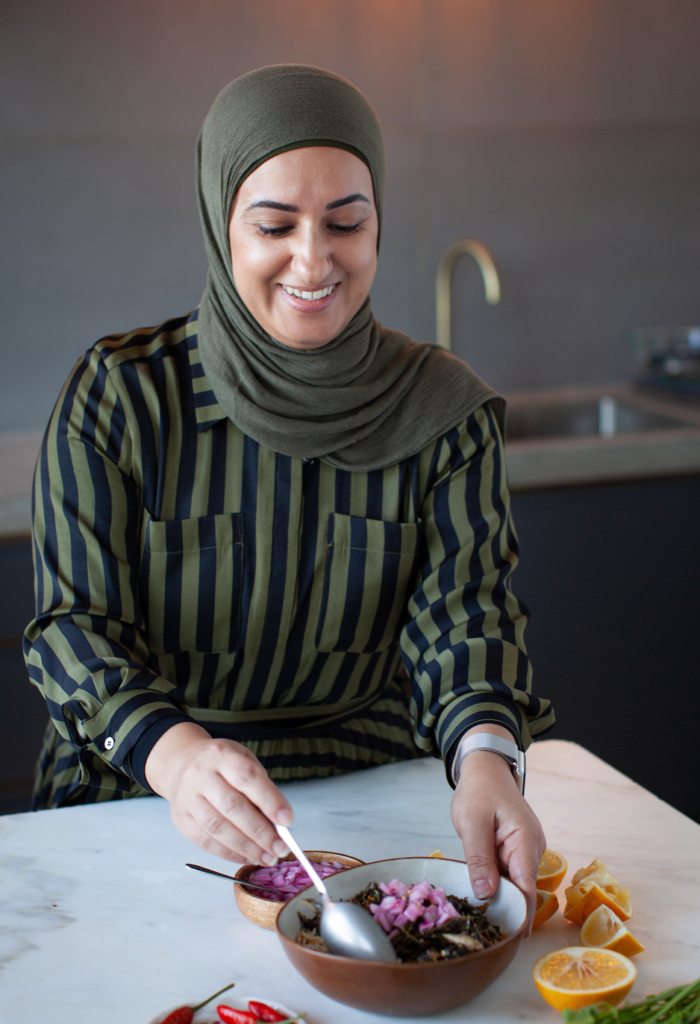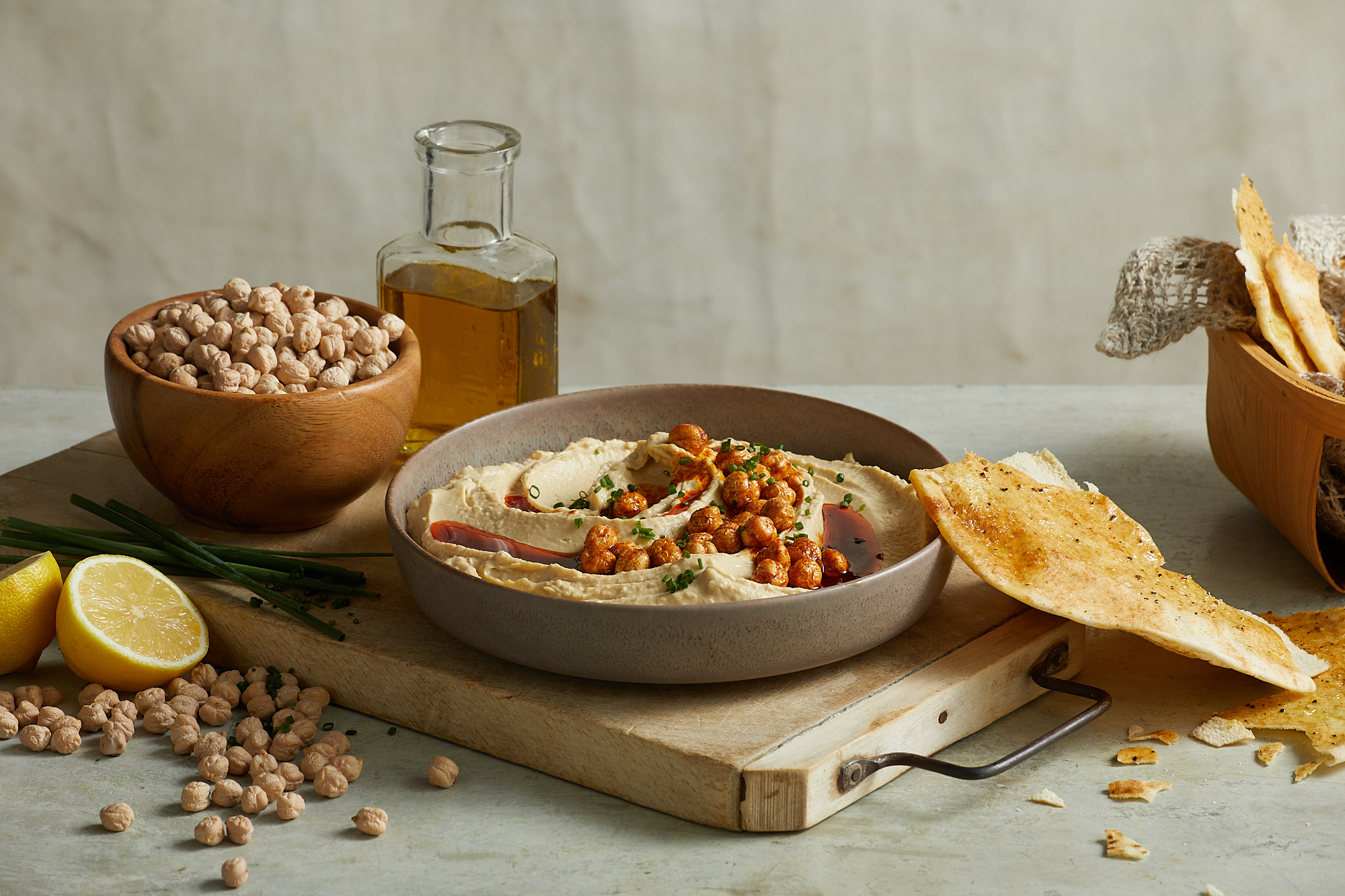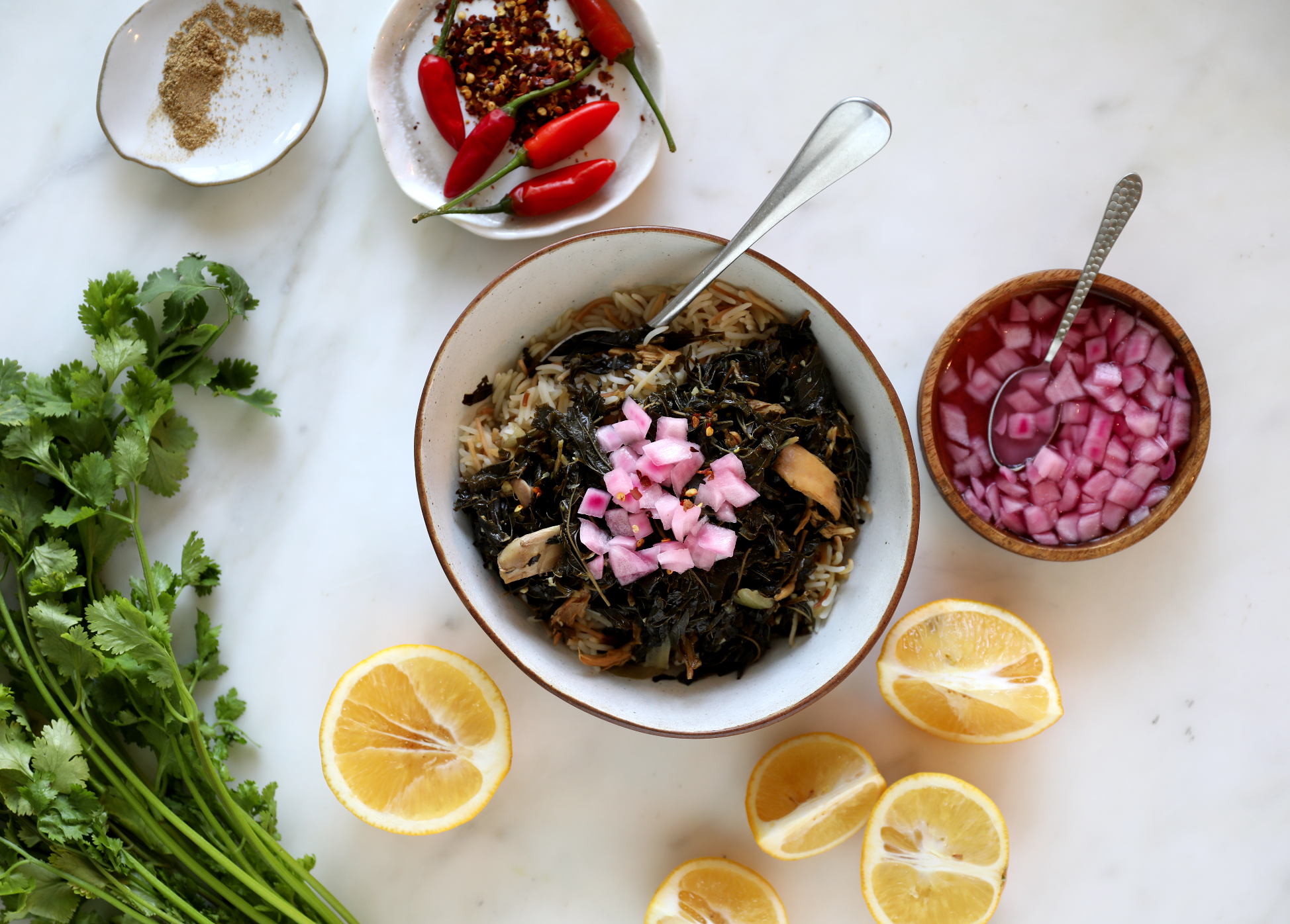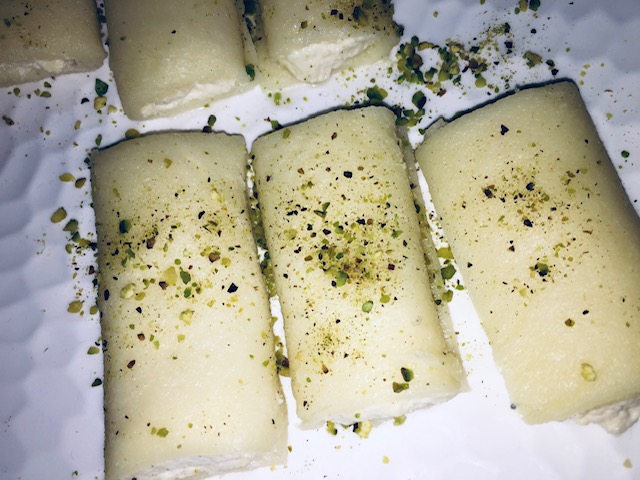Lina’s Lebanese Hummus
 Lebanon
Lebanon 
My parents migrated to Australia from the South of Lebanon in the 70s. My dad arrived first to set up home and my mother followed later with my four older siblings as the civil war erupted and it was simply no longer safe to stay. Their migrant story is a familiar one…Relocation for the chance of a better life for themselves and, of course, their children. My parents have now called Australia home for more than 40 years and live surrounded by their 6 kids, 24 grandchildren and 19 great-grandkids. You could say there’s a lot of us now!
I’m the youngest of my siblings. Born post-migration, I have never totally understood what it would be like to live in Lebanon. I was born a foreigner in a foreign land. Not belonging here, nor did I belong there. I struggled for years trying to grasp that sense of belonging, trying desperately to find comfort in the undeniable clash of cultures. And even though my Lebanon has always been somewhat abstract and distorted, I see it and hear it through our (often poor) attempt to maintain language. I feel it through stories, conversations and traditions that emanate from my parents and older siblings. But, more so, my Lebanon is the one I smell and taste through food.
Food nowadays plays a vital role in mending that dislocation of my Lebanese culture and identity. It has allowed me to reignite my passion for my heritage and my determination that our culture and heritage is not lost to coming generations.
Food is the bringer of good both literally and metaphorically. It’s a necessity to survive for sustenance and nutrition, of course, but food is also a feeder of the soul. It awakens memories and allows for new ones to be made. It delivers stories and creates connections between past and present and it bridges gaps and creates bonds between those who share it.
I can name quite a few Lebanese dishes that really do this for me more than others. Dishes that immediately remind me of culture, of home, of childhood, of family, of a sense of belonging that I was never sure I had. Dishes that I cook quite often now because I want my own children to hang onto some kind of connection to their roots.
The first dish and recipe that I’m sharing is hummus. It probably needs little introduction because people across the globe now know and love this ancient Arab dip. In Lebanese households, hummus makes regular appearances at many lunch and dinner and sometimes even breakfast tables. For me, over the last few years, hummus has played a vital role in my campaign to use the act of sharing food to help me build bridges between people from all walks of life, cultures and religions. It helped me break down barriers and build friendships and it gave me a kind of calling card to introduce myself to people I didn’t know. This simple dish took that commonplace act of making and sharing food and created a powerful tool for building social cohesion.
My #spreadhummusnothate campaign began in 2016 when a certain Australian politician ignited the debate about ‘allowing’ Muslims into the country and whether existing Aussie Muslims belonged here at all. I knew such ignorantly spoken conversations would make people within my community targets and I couldn’t sit back and let this happen again. So I decided to take the hastag #spreadhmmusnothate into the real world, gifting people a delicious bowl of homemade hummus with the intention to pave the way for open conversation, understanding and new friendships.
If you have only ever tasted a store-bought hummus, oh boy are you missing out! This dip, a must at every BBQ throughout my childhood, is so much more than that! Using basic pantry essentials, even the novice cook can make it. And once you taste a homemade hummus, trust me you’ll never want to buy store-bought stuff again!
The second dish I’m sharing with Recipes for Ramadan is perhaps not so well known amongst non-Arabs. It’s what’s called Mloukiya. In English, the leaf used in this dish is known as jute leaves or mallow and I’m not sure it’s used much for cooking in most parts of the world – if at all. But it’s grown all over the Middle East with a number of countries in the region considering Mloukiya a traditional dish. It is probably no surprise but I find the Lebanese version to be the most delicious.
Mloukiya isn’t a difficult dish to make but it does take a bit of time to prep and cook. This is perhaps why, when I was a kid, my mum would make enough to last a few days! At the time I hated having to eat it for days on end. ‘Why would you make so much!?’ I’d often ask her, thinking it was some kind of punishment! Ironically, I’m now a born-again Mloukiya-lover and I do the exact same thing to my own kids. Our family nickname for it is ‘ugly delicious’ but it’s my ultimate comfort dish and it brings me much joy to know my kids love it too. Do try to get hold of the leaves. They can’t be found in every suburb of Sydney but if you go to the most multicultural suburbs you will find it fresh in summer or you can buy it dry in large packs.
Share this story

IMPORTANT! Beginning the night before, soak the dry chickpeas in a bowl of (approximately) 3 cups water with the teaspoon of bicarb. The chickpeas will need to soak overnight and will double in size.
The following day, rinse chickpeas and place in a large saucepan and cover with plenty of water and a teaspoon of bi carbonate of soda. Bring to the boil, reduce heat and leave to simmer for at least an hour. The chickpeas are ready when they look mushy and over-cooked. ALTERNATIVELY you can use a pressure cooker with plenty of fresh water. Lock the lid and turn to the LOW pressure setting and cook for 20 minutes. Allow the pressure to release and cool naturally. This may take a further 20 minutes or more depending on the type of pressure cooker you have. When the chickpeas are cooked, drain away as much liquid as you can leaving only chickpeas behind. The chickpeas will look mushy, but do not fret…that’s exactly how you want them! This softens and almost melts away the chickpea skin that you don’t need to remove them. Set aside to drain & cool before going to the next step.
Place the garlic, salt and cumin into a mortar and pestle and crush to create a paste. Set aside with the lemon juice.
Place the chickpeas in a food processor and blend until a smooth puree is formed. Add tahini, garlic, salt and cumin paste and blend some more. While processor is on, add 1/3 cup of lemon juice in a steady stream. Stop to scrape down sides and taste for more lemon juice (TIP: for a super smooth hummus, strain lemon juice and garlic paste before adding to chickpeas!). Add more lemon juice, only a little at a time but no more than 2/3 cup. Remember you want your hummus lemony but you don’t want it runny.
Serve with lots of extra virgin olive oil, a sprinkle of paprika, zataar or sumac. Or load it with a spiced meat, chopped parsley, char-grilled asparagus or some crunchy sweet potato fries.
Hummus can be kept refrigerated for a few days in an airtight container.




